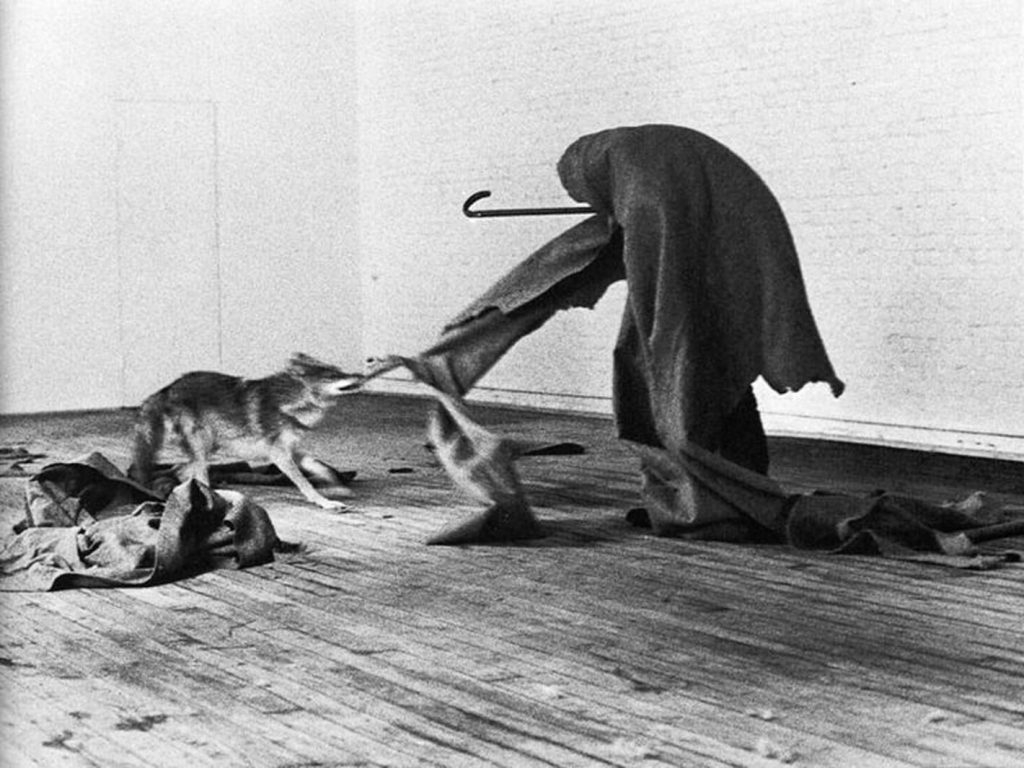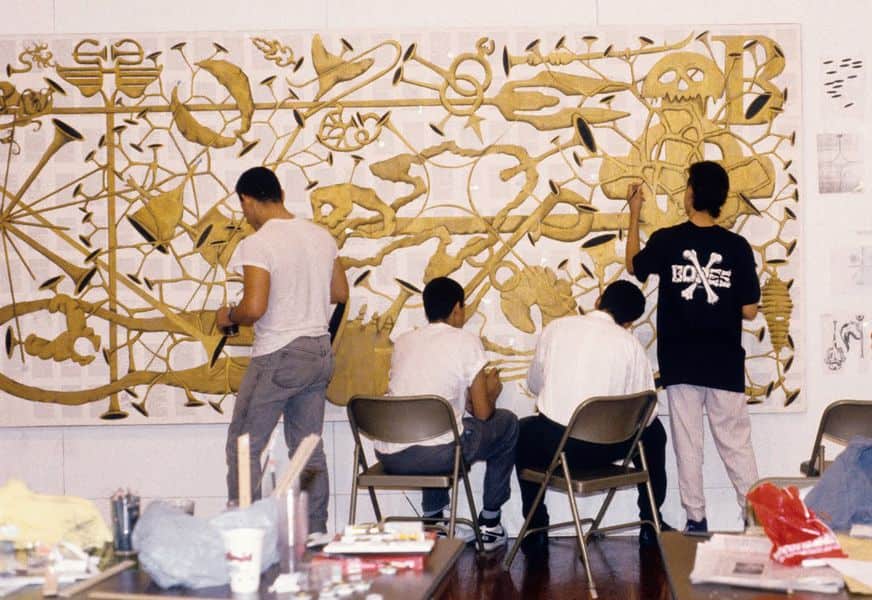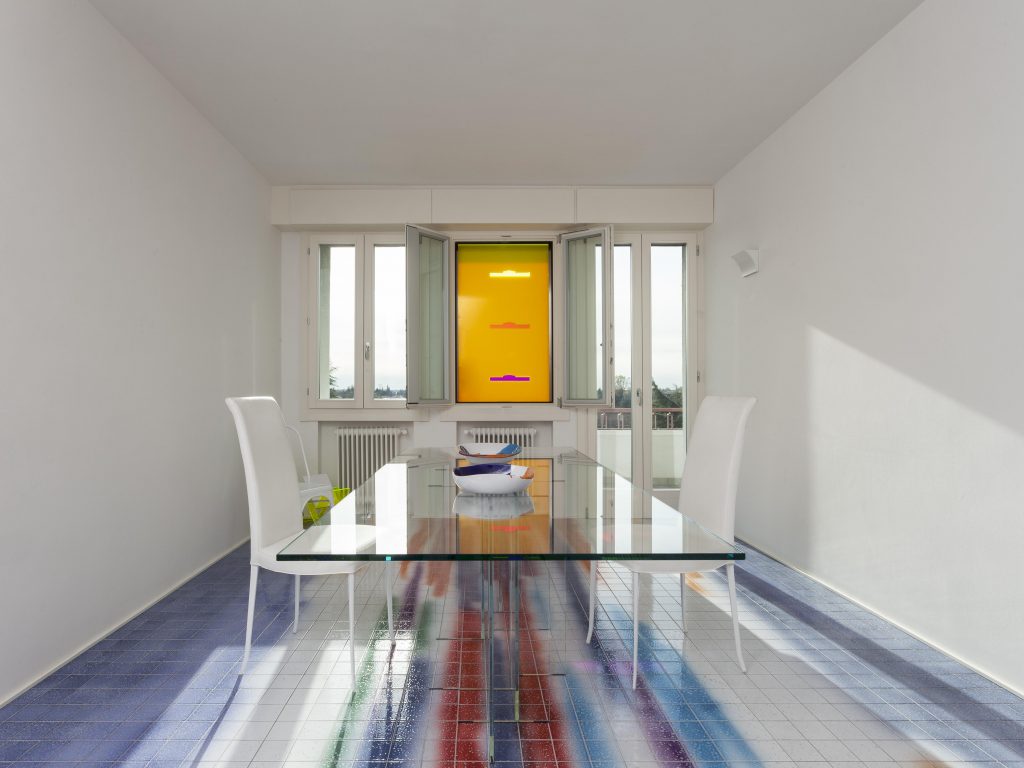We all know about Nike’s iconic shoes, but do we know where the famous Swoosh embroidered on the right side of the sneakers originated? The logo was designed in 1971 by Carolyn Davidson, a design student at Portland State University. In this case, as is often the case in history and art history, the principle of de nihilo nihil applies, so the graphic expression of the rustling wind was inspired by the outstretched wings of the splendid Nike of Samothrace.
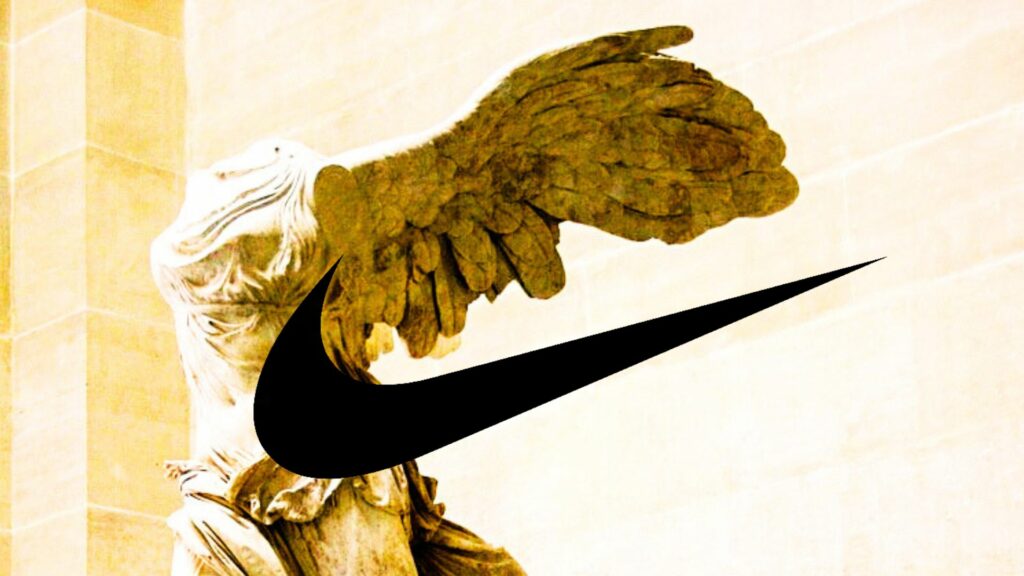
The success of many products is linked to an image capable of representing them: the brand. The etymology of “brand” derives from the Norse “brandr,” meaning “to burn, to brand with a bright fire,” and according to the most established and discussed definition, given by the American Marketing Association, it is “a name, term, sign, symbol, or any other feature that is intended to make a seller’s goods or services identified and distinguished from those of others.” The importance of brand is believed to be an interpretive figure of the contemporary world, and while in the early days of industrial society it represented a kind of shortcut to make consumers aware of goods, in advanced capitalism branding has become a means by which companies make customers fall in love with them even at the cost of ignoring quality and price (an experience I would say is common to all of us today).
Place branding has progressively become one of the potentially strongest frontiers not only for companies, but also for administrations and citizens. The reputation of a place and its community is worth as much as social capital for a company: this is well known by many cities that have intensified brand policy to regenerate what can be considered “intangible artillery of symbolic seduction.”
One of the most famous territorial marketing ever, if not the most famous, is the one put in place by the city of New York: I Love NY. This small and simple logo has become an integral part of mass culture, not only of New Yorkers, but of the entire world. Now New York would not need to “advertise,” yet in the 1970s, when branding began, the city had a bad reputation. Some of the films of those years, such as Walter Hill’s The Warriors (1979) and Martin Scorsese’s Taxi Driver (1976), reflect the issues that plagued the city and bring a dirty, dark, problematic NYC to the scene.
It was 1977 when it was decided that something had to be done to reverse the city’s bad reputation. The unmistakable New York logo as we still know it today was the brainchild of Milton Glaser to give new form to Charles Moss’ already existing design. I Love NY, with the letters I N Y engraved in black lettering and a cherry-red heart in place of “love,” was a revolution for the city and for the citizens themselves, who began to feel a sense of community and develop a pride that is now an integral part of every New Yorker.
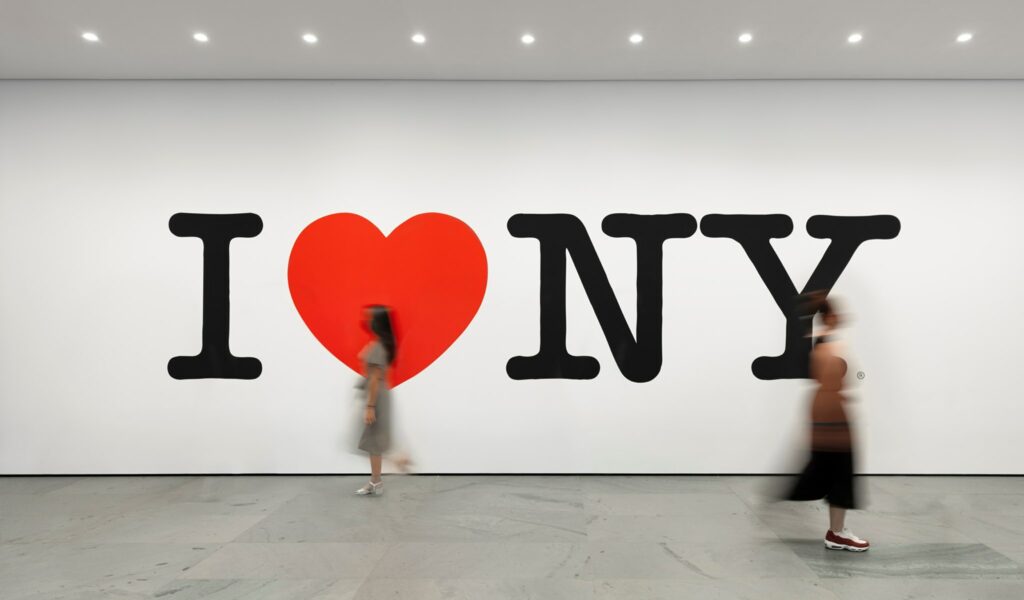
A special version appeared for a while in 2001, even becoming the cover of the Daily News: “I Love NY More Than Ever,” with a black scar over the red heart. Even after the Covid hit the city hard, the “special” logo was dusted off to remind everyone that New York can handle anything. In just a few characters, the logo encapsulates words and emotions in an immediate and symbolic way. Printed on t-shirts, mugs and gadgets of all kinds, today the brand generates profits exceeding $30 million a year (and to think it was made pro bono!). Glaser, who in 2009 received the National Medal of Art award from incumbent U.S. President Barack Obama, is considered the creator of a new form of communication called social design: design tailored to society. In an interview with the New York Times, Glaser states:
“Sapevo che quello che stavamo comunicando era qualcosa che teneva insieme le persone, che stabiliva per loro un modo di comunicare”.
When we think of a place, a tourist destination, we refer to a virtual image defined as the set of more or less mediated beliefs, ideas, information that the place has on the mainstream scene. The image of the place is formed through place personality, i.e., the understanding of the basic characteristics and territorial vocation of the destination, and through place making, i.e., all the actions put in place by different actors to succeed in representing the territory. Su questo ultimo, a partire dal secondo dopoguerra, ha iniziato a giocare un ruolo chiave il cultural branding, come nel caso di New York City. On the latter, since after World War II, cultural branding has begun to play a key role, as in the case of New York City. Local actors engage in the co-production of imaginaries, because these guarantee the possibility of attracting financial investment and localization: the organizational, social and identity aspects, which have enabled the massification of tourism, have also contributed to making it a powerful engine of territorial productive transformation (with culture we eat, and how!).
The 1970s image of a New York City with black streets marked by blood red is nothing more than an aftermath of the atomic effects of World War II. It is a period of contrasts: in the historical photographs of those years we find, on the one hand, piles of rubble and, on the other hand, skyscrapers next to it, an expression of the technique of innovation. The rebirth of the territorial economy focuses mainly on the tourism sector. As we have above seen for the case of New York, the same cultural branding strategies are also being applied in the Old World to become destinations of the new Mass tourism routes. As for the Veneto region, we delve here into the case of Verona.

The provincial capital is located in the northern part of the Po Valley, at the foot of the Lessini Mountains and is crossed at its heart by the Adige River. The historic center of the city was included in 2000 (after a long process that began in 1995) in the World Heritage List, with the generic designation of “City of Verona”. A great achievement, since the city can be considered, like so many others in our country, as an open-air museum. The points of greatest tourist interest in the historic center are certainly the buildings dating back to Roman times, which in Verona are not only excellently preserved, but continue to be part of the daily life of the inhabitants: if the Ponte Pietra, the Roman Theater, the Gavi Arch, Porta Borsari, and Porta Leoni continue to be infrastructures of the city space, the famous Arena amphitheater since 1936 has offered a thriving calendar of opera performances and concerts that attract thousands of spectators each season. Altri importanti monumenti e opere architettoniche che caratterizzano la città risalgono al periodo comunale e in particolare alla fase del governo Scaligero: in questo periodo il centro viene circondato dalle mura, sorge il Castello di San Martino in Aquaro (cosiddetto Castelvecchio), si moltiplicano le torri – Torre dei Lamberti, Torre del Gardello – così come i monumenti funebri noti come Arche Scaligere. Under Venetian rule, new buildings in the Renaissance style were then constructed, mainly by the famous Venetian architect Michele Sanmicheli. He was responsible for the new urban structure, the rampart walls with monumental gates such as Porta Vescovo and Porta San Zeno, palaces such as Palazzo Maffei or del Capitano, and also numerous interventions inside the churches. Thanks to the Austrian presence in the nineteenth century, Verona became a real fortress city: bastion walls were built, an arsenal, a provianda was established in the former convent of Santa Marta (now the economic campus of the University of Verona) and military buildings of various kinds such as Castel San Pietro, an imposing fortress built on top of the hill where Verona originated, Forte San Lorenzo, Palazzo Barbieri (where the Austrian command was based), the Monumental Cemetery and the Military Hospital.
“There is no world outside the walls of Verona, but only purgatory, torment and hell. He who is banished from here is banished from the world, and banishment from the world is death.”
The quote is from scene II of Act III of the most famous of the plays that William Shakespeare set Romeo and Juliet in Verona. The English playwright set as many as five of his plays in the Veneto region, despite never having been there: “The Merchant of Venice” and “Othello,” published in 1600 and 1604, respectively, are set in Venice, “The Taming of the Shrew” (1594) in Padua, and “The Two Gentlemen of Verona” and “Romeo and Juliet,” 1623 and 1594, in Verona. Shakespeare described all these cities according to the Elizabethan viewpoint contemporary with him, for which, Italy was often regarded as a land of treachery, poison, and conspiracy. He composed Romeo and Juliet between 1594 and 1596. The tragedy, since its publication gave rise to what can be called one of the greatest romantic myths of Western culture: the story of a perfect love but opposed by society and thus ended in tragedy.
The story was not without historical basis; in fact, in the medieval period, Verona was the scene of strong internal clashes between enemy families on the Guelph and Ghibelline sides, which included the Montagues and the Cappellets (Capulets in Shakespeare’s tragedy). So much so that Dante Alighieri in a passage in Canto VI of Purgatory relates:
“Vieni a veder Montecchi e Cappelletti, Monaldi e Filippeschi, uom senza cura: color già tristi, e questi con sospetti!”
In the early 20th century the European spread of nationalist sentiments also involved Italy: the municipality of Verona rode the wave of medieval revival and international fame, due to Shakespearean dramas, to structure the myth of the two lovers. In 1907 the municipality purchased the Dal Cappello house located today at 13 Via Cappello from the Failler family. With the purchase of the house, the first readjustments of the building were immediately made to facilitate visits by tourists, who already in the mid-19th century were complaining about the state of neglect in which the site was located. But the actual work that led to the restoration of the exterior building to its current appearance began in 1940: the then director of the Civic Museums Antonio Avena was the promoter of this operation that today we could define to all intents and purposes as “architectural forgery.” Decorative elements in a hypothetical Renaissance style were added to the original structure, without philological research and according to a purely aesthetic criterion: from the Gothic rose window to the 15th-century trefoil windows. The most iconic intervention was the addition, on the second floor, of the world-famous balcony: in a 1926 photograph it appears on the ground in the courtyard of the Castelvecchio Museum; it was in fact an ancient Scaliger sarcophagus.


Finally, a bronze statue of the beautiful Juliet made by Nereo Costantini was placed on the back wall of the courtyard in 1972. The second stage of the legend is the House of Romeo, which since the 19th century was identified in the medieval complex in Via Arche Scaligere and referred to as the Montecchi house. There was an attempt by the City of Verona, based on plans by Antonio Avena, to purchase the entire building to make it the headquarters of the Soprintendenza and a Shakespeare museum, but the owners and the Ministry did not agree to the project. The “house of Romeo” to this day can only be seen from the outside.
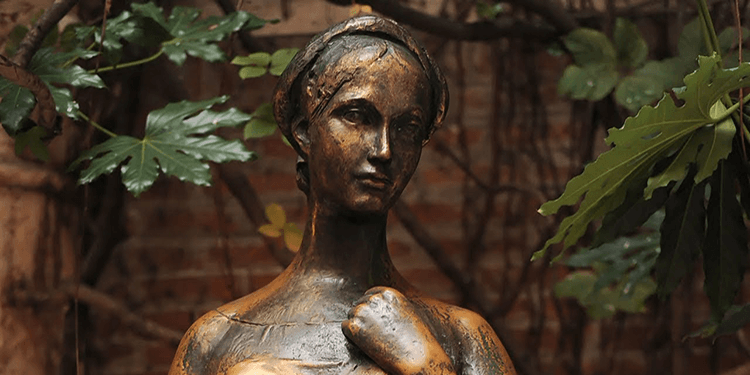
Finally, in 1938 Antonio Avena placed the red marble sarcophagus known as Juliet’s Tomb in the former convent of San Francesco al Corso, now home to the Museo Civico: the site was already a pilgrimage destination in the nineteenth century, but with this action of objectifying the legend the branding set of the city of lovers was completed: in this way, the city was ready to present itself as an ideal stage for numerous film adaptations and callbacks, from the 1936 “Romeo and Juliet” directed by George Cukor, to Franco Zeffirelli’s 1968 “Romeo and Juliet,” to Mark Steven Johnson’s 2022 Netflixian “Love in the Villa.”

In these capacities, Verona becomes a favored destination for the first flows of mass tourism: the cultural branding through which the average visitor is attracted revolves around the theme of the “City of Love.”
Today, in downtown tobacconists’ and stationers’ shops, in stalls scattered around the squares, and in museum shops, the “Romeo and Juliet” brand is in first place. In these capacities, Verona becomes a favored destination for the first flows of mass tourism: the cultural branding through which the average visitor is attracted revolves around the theme of the “City of Love.” All these letters are received by the “Juliet Club,” composed of a team of volunteers who respond as “Juliet” to each individual sender.
The problem, for the case of Verona, is the non-parallelism between place branding and social brandinglet me explain better: while in the case of New York the brand expressed the image that its citizens wanted to give of the city – a safe, new, state-of-the-art city – for Verona the tourist image of the city is reduced to the brand.
Let us examine concretely a couple of relevant issues in this regard: we said that Verona has been enrolled in the WHL since 2000, this recognition was obtained not as a “literary city,” but by citing the Declaration of Values:
“Because of its urban structure and architecture, Verona is a splendid example of a city that has developed progressively and uninterruptedly during two thousand years, integrating artistic elements of the highest quality from the different periods that have succeeded one another; Verona exceptionally represents the concept of the multi-stage fortified city characteristic of European history.”
To paraphrase, the city is a World Heritage Site because of its urban structure and particularly its system of walls and fortifications. Yet, the Park of the Walls, is not managed directly by the municipality but, through Legambiente (https://www.legambienteverona.it/parco-mura/) and also lacking a physical reference site, not to mention the lack of signage or merchandising in the city stores.
Reading the table with the numbers of annual visitors to the Veronese Civic Museums (published on January 20, 2023 in L’Arena: https://www.larena.it/territorio-veronese/citta/musei-verona-calo-visitatori-1.9845953), we notice that, right after the Arena, Juliet’s House discards the Castelvecchio Museum by a wide margin.
For those who are passionate about art and even vaguely familiar with the names Licisco Magagnato and Carlo Scarpa this is inexplicable.
The castle that now houses the museum was built between 1354 and 1356 at the behest of Cangrande II della Scala for defensive reasons, but for a brief period it was also the place of residence of the Della Scala family. In the nineteenth century, after the passage to the Italian state, it remained barracks until, in 1924, thanks to the director of the civic museums Antonio Avena and the Soprintendenza architect Ferdinando Forlati, a medieval-style restoration was carried out and it was made home to the civic collections. During World War II Verona was severely bombed, and the castle and adjoining bridge suffered severe structural damage that led to its closure. In 1956 the young Licisco Magagnato, who had just won the competition for the direction of the civic museums, commissioned Carlo Scarpa to restore and set up the museum. The operations lasted until 1964, and the museum emerged reborn. To this day, Scarpa’s restoration of Castelvecchio is one of the highest examples of Italian museographic architecture of the second half of the 20th century: perfectly closing the new structure, hoisted on a high concrete base, is the equestrian statue of Cangrande della Scala, who, with his smile, inhabits his palace forever.

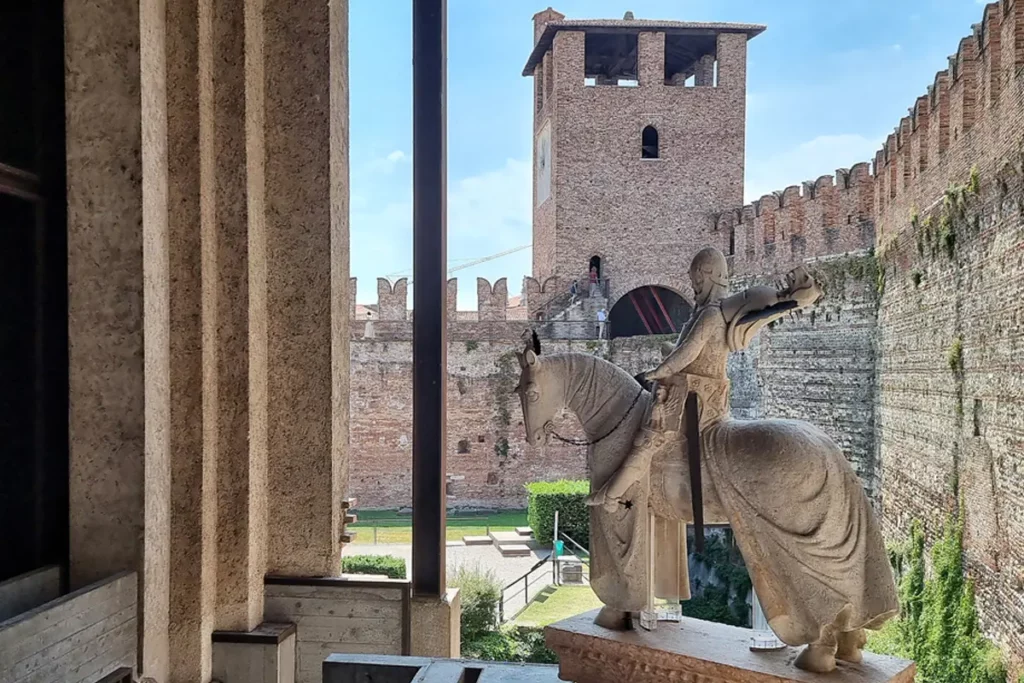
Properly targeting a cultural branding campaign requires a strong base of historical and philological knowledge of the places one intends to promote and a strong awareness of the goals one intends to achieve in order to cope with the mass media risk of branding degeneration. Mass promotion can lead to an uncritical enjoyment of the thing of cultural interest, making it equate to a particular brand of sneakers to be preferred over another on the basis of unjustified and unclear, baseless and therefore easily expiring motivations, which lead to the transformation of Heritage into Capital.
Today we are aware of the destructive power of this dynamic, so it is a duty to use cultural branding to intrigue, taking care not to make it the dominant, lapidary image of a reality; letting the individual, visitor or citizen, enthusiast or occasional interested party, consciously and freely create the space of the city.

